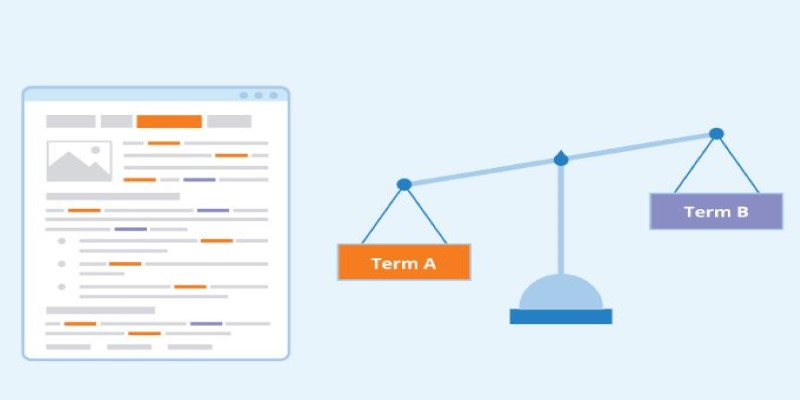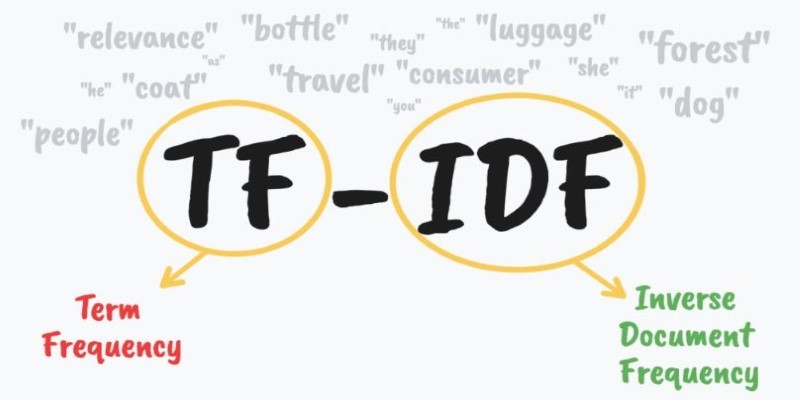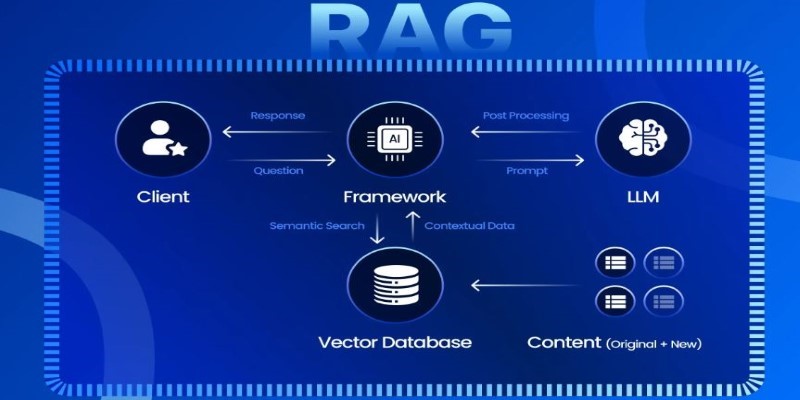Search engines rank content using structured algorithms, and one key concept behind this process is TF-IDF (Term Frequency-Inverse Document Frequency). It measures the importance of a word in a document relative to a larger dataset, helping search engines understand content relevance. TF-IDF has been crucial in SEO, machine learning, and natural language processing for decades.
It guarantees that important words override common words, affecting how content ranks. By knowing TF-IDF, online marketers, SEO specialists, and data analysts can create more effective, search-optimized content that is in harmony with search engines' anticipation and gets more exposure on search pages.
Understanding TF-IDF: Breaking It Down
TF-IDF is basically a mathematical formula used to quantify the importance of a word in a document relative to a collection of documents. TF-IDF contains two main components:
Term Frequency (TF):

This part of the formula counts how often a specific word is used in a document. The more it is used, the higher its score. But not all words are created equal. Common words like "and" or "the" are used in almost every document, so they are not as useful for analysis.
Inverse Document Frequency (IDF):
This feature balances out words that are too common in most documents. Every time a word is found in numerous documents, it's less unique and gets a lower score. The less frequently a term is found within a large body of documents, the more precious it is when it does appear.
The combination of both values gives a measure of the worth of each word. Those with high TF-IDF count should dictate a document's topic, giving higher importance to the Terms AI-related words such as "AI," "machine learning," or "algorithm," while the general words like "the" and "is" would score much lower in relevance.
Why TF-IDF Matters for SEO and Content Ranking?
Search engines, especially Google, depend on TF-IDF concepts to identify how important a page is to a search query. Although contemporary algorithms have evolved with AI-based models, TF-IDF continues to form the basis of assessing content.
TF-IDF is crucial in SEO as it helps content creators gauge word importance. Keyword stuffing is ineffective; search engines now prioritize natural, meaningful keyword usage. TF-IDF ensures that search algorithms recognize valuable content while filtering out unnatural keyword placements, ultimately improving content relevance and ranking in search results.
Additionally, TF-IDF is used in keyword research to identify which words and phrases contribute most to content ranking. SEO experts often analyze TF-IDF scores to find underutilized but valuable keywords that competitors might be overlooking. By strategically including words with high relevance, content can become more competitive in search rankings.
Beyond SEO, TF-IDF is a critical tool in text analysis and natural language processing. It helps systems like chatbots, recommendation engines, and document classifiers understand the context. For instance, if a company is analyzing thousands of customer reviews, TF-IDF can highlight the most relevant words that indicate customer sentiment or common complaints.
Practical Applications of TF-IDF
While the concept is rooted in mathematics, its real-world applications make it invaluable across various industries.
Search Engine Ranking: TF-IDF influences how search engines rank pages by determining the most relevant terms. It ensures that high-quality content ranks higher than pages that merely repeat keywords without depth.
Content Optimization: Writers and marketers utilize TF-IDF analysis to enhance content strategies by pinpointing significant terms within a niche. Thus, they craft impactful content without depending on obsolete keyword-stuffing methods.
Plagiarism Detection: Since TF-IDF scores highlight unique word patterns, they are commonly used in plagiarism detection systems. If two documents have a high overlap of weighted terms, the system can flag them for review.

Spam Filtering: Email services use TF-IDF to differentiate between legitimate emails and spam. Common spam phrases receive lower relevance scores, helping filter out unwanted messages.
Sentiment Analysis: Businesses analyzing customer feedback can use TF-IDF to extract the most relevant terms from product reviews. This helps identify trends, customer preferences, and areas for improvement.
Recommendation Systems: Online platforms use TF-IDF to recommend content based on user preferences. Streaming services, for example, analyze movie and TV show descriptions using TF-IDF to suggest content that is similar to that of viewers.
These applications highlight how TF-IDF is not just an abstract theory but a powerful tool that silently shapes the way we interact with digital content every day.
Limitations of TF-IDF and the Rise of Advanced Models
Despite its usefulness, TF-IDF has limitations. One of its biggest drawbacks is that it doesn't consider the meaning of words—it only measures their frequency and distribution. This means it struggles with synonyms, context shifts, and nuanced language.
For example, the words “car” and “automobile” mean the same thing, but a basic TF-IDF model treats them as separate entities. Similarly, TF-IDF doesn’t understand sentence structure or the relationship between words, which can limit its effectiveness in deeper text analysis.
Because of these challenges, modern search engines and AI models have evolved beyond TF-IDF. Algorithms like Word2Vec, BERT, and transformer-based models use contextual learning to understand the deeper meaning behind words. These models analyze not just word frequency but also relationships between words, improving the accuracy of search results and content recommendations.
However, TF-IDF remains a foundational tool in many text analysis tasks. It serves as a stepping stone for more advanced models and continues to be a valuable metric in SEO, content creation, and data science.
Conclusion
TF-IDF is a fundamental concept shaping how search engines and algorithms assess content relevance. By measuring word importance in context, it influences SEO, text analysis, and machine learning. While advanced AI models now refine search accuracy, TF-IDF remains a crucial tool for ranking content and improving visibility. Understanding its role helps content creators and marketers optimize their work effectively. Though it has limitations, TF-IDF continues to be a key factor in how we search, analyze, and interact with information online.











